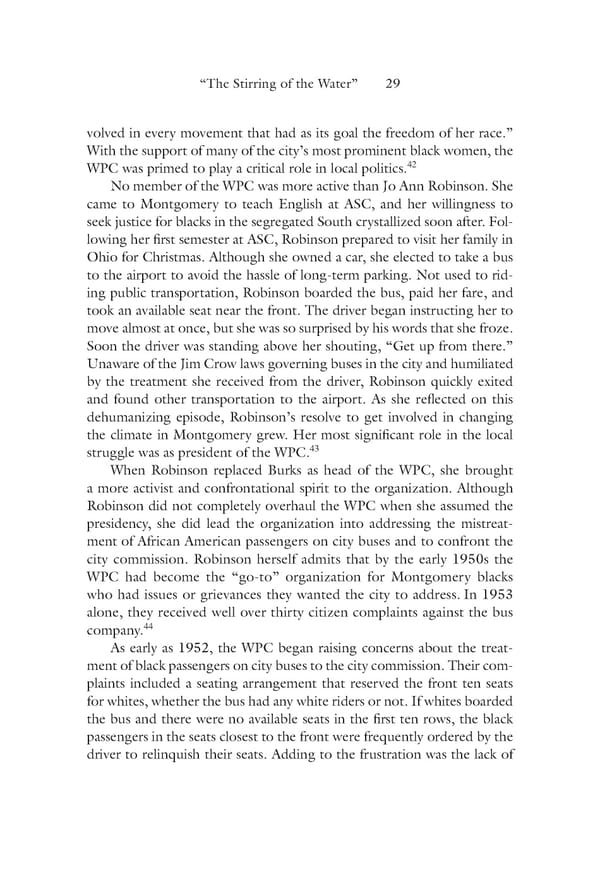“The Stirring of the Water” 29 volved in every movement that had as its goal the freedom of her race.” With the support of many of the city’s most prominent black women, the 42 WPC was primed to play a critical role in local politics. No member of the WPC was more active than Jo Ann Robinson. She came to Montgomery to teach English at ASC, and her willingness to seek justice for blacks in the segregated South crystallized soon after. Fol- lowing her first semester at ASC, Robinson prepared to visit her family in Ohio for Christmas. Although she owned a car, she elected to take a bus to the airport to avoid the hassle of long-term parking. Not used to rid- ing public transportation, Robinson boarded the bus, paid her fare, and took an available seat near the front. The driver began instructing her to move almost at once, but she was so surprised by his words that she froze. Soon the driver was standing above her shouting, “Get up from there.” Unaware of the Jim Crow laws governing buses in the city and humiliated by the treatment she received from the driver, Robinson quickly exited and found other transportation to the airport. As she reflected on this dehumanizing episode, Robinson’s resolve to get involved in changing the climate in Montgomery grew. Her most significant role in the local 43 struggle was as president of the WPC. When Robinson replaced Burks as head of the WPC, she brought a more activist and confrontational spirit to the organization. Although Robinson did not completely overhaul the WPC when she assumed the presidency, she did lead the organization into addressing the mistreat- ment of African American passengers on city buses and to confront the city commission. Robinson herself admits that by the early 1950s the WPC had become the “go-to” organization for Montgomery blacks who had issues or grievances they wanted the city to address. In 1953 alone, they received well over thirty citizen complaints against the bus company.44 As early as 1952, the WPC began raising concerns about the treat- ment of black passengers on city buses to the city commission. Their com- plaints included a seating arrangement that reserved the front ten seats for whites, whether the bus had any white riders or not. If whites boarded the bus and there were no available seats in the first ten rows, the black passengers in the seats closest to the front were frequently ordered by the driver to relinquish their seats. Adding to the frustration was the lack of
 Becoming King: Martin Luther King Jr. Page 49 Page 51
Becoming King: Martin Luther King Jr. Page 49 Page 51